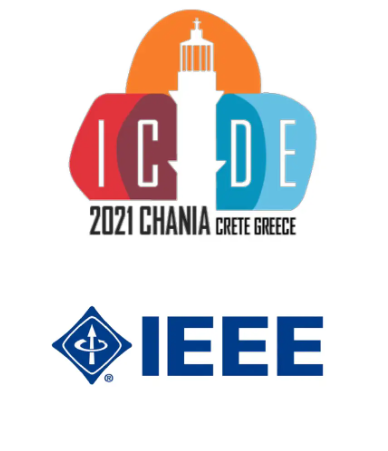
icde 1990 论文列表Proceedings of the Sixth International Conference on Data Engineering, February 5-9, 1990, Los Angeles, California, USA. |
How to Share Work on Shared Objects in Design Databases.
Long-Duration Transactions in Software Design Projects.
A Flexible Transaction Model for Software Engineering.
A "Greedy" Approach to the Write Problem in Shadowed Disk Systems.
Buffer and Load Balancing in Locally Distributed Database Systems.
Database Buffer Model for the Data Sharing Environment.
Propagating Updates in a Highly Replicated Database.
Update Propagation in Distributed Memory Hierarchy.
Currency-Based Updates to Distributed Materialized Views.
Attribute Inheritance Implemented on Top of a Relational Database System.
On Representing Indefinite and Maybe Information in Relational Databases: A Generalization.
Extended Relations.
Concurrency Control of Bulk Access Transactions on Shared Nothing Parallel Database Machines.
A Multiuser Performance Analysis of Alternative Declustering Strategies.
Chained Declustering: A New Availability Strategy for Multiprocessor Database Machines.
An Analysis of Borrowing Policies for Escrow Transactions in a Replicated Data Environment.
The Grid Protocol: A High Performance Scheme for Maintaining Replicated Data.
Distributed RAID - A New Multiple Copy Algorithm.
A Brief Overview of LILOG-DB.
A Shared Conceptual Schema for Four Medical Expert Systems.
Multi-User View Integration System (MUVIS): An Expert System for View Integration.
A Partitioned Signature File Structure for Multiattribute and Text Retrieval.
The Generalized Grid File: Description and Performance Aspects.
The R-File: An Efficient Access Structure for Proximity Queries.
Compilation of Logic Programs to Implement Very Large Knowledge Base Systems - A Case Study: Educe*.
An Algorithmic Basis for Integrating Production Systems and Large Databases.
A Cooperative Approach to Large Knowledge Based Systems.
Multilevel Secure Database Concurrency Control.
The Fingerprinted Database.
The Semantic Data Model for Security: Representing the Security Semantics of an Application.
Spatial Search with Polyhedra.
Selectivity Estimation Using Homogeneity Measurement.
A New Tree Type Data Structure with Homogeneous Nodes Suitable for a Very Large Spatial Database.
An Object-Oriented Approach to Data/Knowledge Modeling Based on Logic.
An Attribute-Oriented Approach for Learning Classification Rules from Relational Databases.
Structuring Knowledge Bases Using Automatic Learning.
A Suitable Algorithm for Computing Partial Transitive Closures in Databases.
Join Index, Materialized View, and Hybrid-Hash Join: A Performance Analysis.
System Issues in Parallel Sorting for Database Systems.
Bill-of-Material Configuration Generation.
Modeling Design Object Relationships in PEGASUS.
Extending Object-Oriented Concepts to Support Engineering Applications.
Parallelism in Object-Oriented Query Processing.
Query Processing for Temporal Databases.
Experiences with Distributed Query Processing.
Experimental Evaluation of Concurrency Checkpointing and Rollback-Recovery Algorithms.
Cost of Distributed Deadlock Detection: A Performance Study.
Scheduling Data Redistribution in Distributed Databases.
A Query Algebra for Object-Oriented Databases.
A Modular Query Optimizer Generator.
Generalization and a Framework for Query Modification.
Performance Evaluation of Multiversion Database Systems.
Parallelism in Database Production Systems.
Serializability in Object-Oriented Database Systems.
Representing Processes in the Extended Entity-Relationship Model.
Alternatives in Complex Object Representation: A Performance Perspective.
Object Views: Extending the Vision.
A Temporal Model and Query Language for ER Databases.
Supporting Universal Quantification in a Two-Dimensional Database Query Language.
A Rule-based Language for Deductive Object-Oriented Databases.
Access Invariance and Its Use in High Contention Environments.
A Paradigm for Concurrency Control in Heterogeneous Distributed Database Systems.
Concurrency Control Using Locking with Deferred Blocking.
Multimedia Object Models for Synchronisation and Databases.
Using a Meta Model to Represent Object-Oriented Data Models.
ViewSystem: Integrating Heterogeneous Information Bases by Object-Oriented Views.

